Homage to Edward Steichen who died on this day fifty years ago.
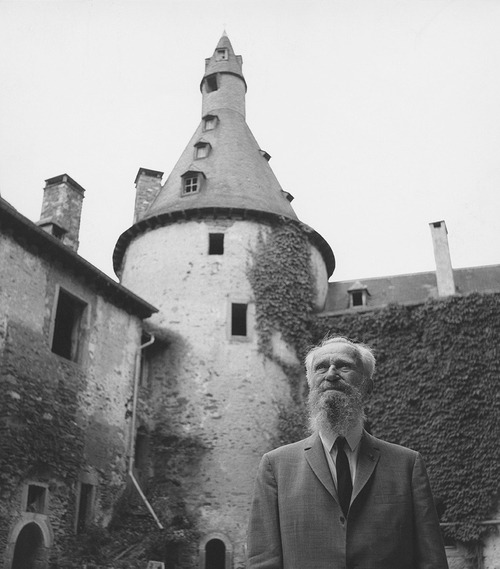 Born in Bivange, Luxembourg on 27 March 1897, the young Edward emigrated to the US with his parents when he was 18. His was a long, varied & rich artistic career: though mainly known as a photographer, he was also a painter, director, curator, gardner & passionate experimenter.
Born in Bivange, Luxembourg on 27 March 1897, the young Edward emigrated to the US with his parents when he was 18. His was a long, varied & rich artistic career: though mainly known as a photographer, he was also a painter, director, curator, gardner & passionate experimenter.
As director of the department of photography of the Museum of Modern Art in New York, Steichen created two monumental exhibitions in the 50s & 60s : The Family of Man and The Bitter Years. As an homage to his native country, he bequeathed the first of these to Luxembourg where one can visit it at the Chateau of Clervaux (https://www.visit-clervaux.lu/en/art/the-family-of-man).
A few years back I wrote the poem below (also included in my 2015 book barzakh) as an homage to Steichen & his work.
Letter to Steichen’s Ed
In fact, every photograph is a fake from start to finish, a purely impersonal, unmanipulated photograph being practically impossible. — Edward Steichen
Leiwen Ed,
Ech wees net ops du ons Sproch nach gekannt hues,
that’s why I’ll address you in American English.
You were born zu Béiwen, bei Roeser, in Luxembourg,
I was not
You were an American citizen,
I am still not,
I am just a plain citizen of Luxembourg.
You believed in the family of man
I am weary of families of any order and species.
But you are family
in that photo by Dana those clear blue
Luxembourg eyes exactly like cousin Lol’s, the cut
of the face too, there’s a resemblance, close to
the bone, close to the farm
a way in which the head
is held. High & loose. You’re my home-
boy of old, Ed, a
cousin, maybe even
“cousin germain”
as the French wld say?
Now, you burned your paintings
when your gardener imitated one of yours —
a strange act, a criticism of
the representation of representation, maybe?
Or just a cheap trick to prove Duchamp wrong
for saying “stupide comme un peintre”
& move on to the new technologies?
Now, I never burned a single poem
have kept them all,
but then you had Carl Sandburg
in the family, devoted companion
for long walks & writing for you
I have always hated taking
photos but bought a camera at sixty
to shoot landscapes
& the family of one Joris
& half a dozen friends
but I always leave it home
or forget that it is in my pocket.
You were a famous delphinium breeder
I only brood over words
make poems & make anthologies,
weird cut flower bouquets
I am in Albany NY & sometimes
visit Buffalo where
you did avant-garde color autochromes
the year Ford introduced the model T-Ford
and one year after Picasso painted
his Demoiselles.
Ah the autochrome!
Hot off the 1903 minds
of the Frères Lumière,
them I’ve seen the Light Brothers,
first marketed in our year 1907,
it is an additive method
a process involving millions
of microscopic
grains of potato starch
(did you ever think of
the Luxembourg staple
food, d’gromper, when you
loaded the camera?)
dyed
bright blue-violet,
bright orange-red
& Kelly green
dusted on a slightly concave piece of glass
already coated with liquid pitch mixed
with a dram of beeswax
to keep it “tacky”
the random spaces filled with lamp-black
& a panchromatic silver halide emulsion
the resultant screen
was stochastic in nature
a random array
an abstraction way beyond the Demoiselles’
demure cubism
though the light you let
pass through the photo-sensitive plate
coming off
your “subjects”, say Charlotte
Spaulding in Buffalo,
with the starch grains remaining as aligned
as the starch of her lacy dress
organized this randomness into
plain Edwardian beauty.
Ed, you were not Edwardian,
you were just a Luxembourg lad
in America who made good
& moved with ease between
Condé Nast & this here place,
fifty years before Warhol.
If I am trying so hard to
understand this autochrome process
(of which you said “ no medium
can give me color of such
wonderful luminosity”)
it is because you also said:
“If you don’t take doors off their hinges,
how are you going to know
to put doors back on their hinges?”
Though that, cousin Ed,
may be where we disagree:
why put the doors back on
the hinges,
beauty will bolt anyway,
and all we are ever left with
is the beauty of doing the work,
the handwork, the hands on work,
your plates, my words.
Merci, cousin,
‘daz gut ze wessen
daz du hei wars virun mir.

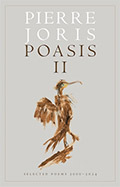 Poasis II: Selected Poems 2000-2024
Poasis II: Selected Poems 2000-2024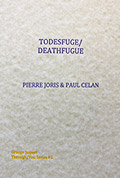 “Todesguge/Deathfugue”
“Todesguge/Deathfugue”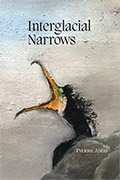 “Interglacial Narrows (Poems 1915-2021)”
“Interglacial Narrows (Poems 1915-2021)”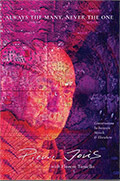 “Always the Many, Never the One: Conversations In-between, with Florent Toniello”
“Always the Many, Never the One: Conversations In-between, with Florent Toniello”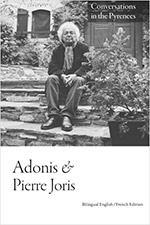 “Conversations in the Pyrenees”
“Conversations in the Pyrenees”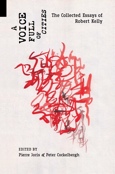 “A Voice Full of Cities: The Collected Essays of Robert Kelly.” Edited by Pierre Joris & Peter Cockelbergh
“A Voice Full of Cities: The Collected Essays of Robert Kelly.” Edited by Pierre Joris & Peter Cockelbergh “An American Suite” (Poems) —Inpatient Press
“An American Suite” (Poems) —Inpatient Press “Arabia (not so) Deserta” : Essays on Maghrebi & Mashreqi Writing & Culture
“Arabia (not so) Deserta” : Essays on Maghrebi & Mashreqi Writing & Culture “Barzakh” (Poems 2000-2012)
“Barzakh” (Poems 2000-2012) “Fox-trails, -tales & -trots”
“Fox-trails, -tales & -trots”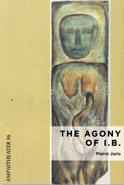 “The Agony of I.B.” — A play. Editions PHI & TNL 2016
“The Agony of I.B.” — A play. Editions PHI & TNL 2016 “The Book of U / Le livre des cormorans”
“The Book of U / Le livre des cormorans”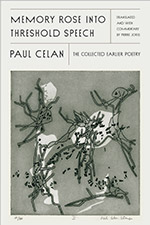 “Memory Rose Into Threshold Speech: The Collected Earlier Poetry of Paul Celan”
“Memory Rose Into Threshold Speech: The Collected Earlier Poetry of Paul Celan”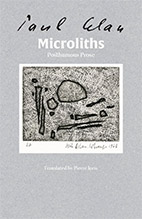 “Paul Celan, Microliths They Are, Little Stones”
“Paul Celan, Microliths They Are, Little Stones”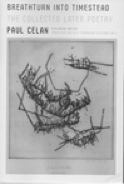 “Paul Celan: Breathturn into Timestead-The Collected Later Poetry.” Translated & with commentary by Pierre Joris. Farrar, Straus & Giroux
“Paul Celan: Breathturn into Timestead-The Collected Later Poetry.” Translated & with commentary by Pierre Joris. Farrar, Straus & Giroux
Some Steichen cultural history, now enjoying a plus ça change moment a century later, is
https://www.vintag.es/2019/03/lee-miller-1928-kotex-ad.html
Thanks for your poem.